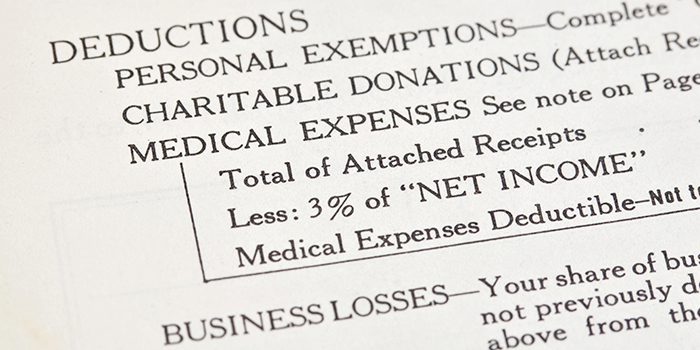 National Hurricane Season is officially in progress. If you suffer damage to your home or personal property, you may be able to deduct the losses you incur on your federal income tax return. Here are 10 tips you should know about deducting casualty losses:
National Hurricane Season is officially in progress. If you suffer damage to your home or personal property, you may be able to deduct the losses you incur on your federal income tax return. Here are 10 tips you should know about deducting casualty losses:
1. Casualty loss. You may be able to deduct losses based on the damage done to your property during a disaster. A casualty is a sudden, unexpected or unusual event. This may include natural disasters like hurricanes, tornadoes, floods and earthquakes. It can also include losses from fires, accidents, thefts or vandalism.
2. Normal wear and tear. A casualty loss does not include losses from normal wear and tear. It does not include progressive deterioration from age or termite damage.
3. Covered by insurance. If you insured your property, you must file a timely claim for reimbursement of your loss. If you don’t, you cannot deduct the loss as a casualty or theft. You must reduce your loss by the amount of the reimbursement you received or expect to receive.
4. When to deduct. As a general rule, you must deduct a casualty loss in the year it occurred. However, if you have a loss from a federally declared disaster area, you may have a choice of when to deduct the loss. You can choose to deduct the loss on your return for the year the loss occurred or on an amended return for the immediately preceding tax year. Claiming a disaster loss on the prior year’s return may result in a lower tax for that year, often producing a refund.
5. Amount of loss. You figure the amount of your loss using the following steps:
Determine your adjusted basis in the property before the casualty. For property that you buy, your basis is usually its cost to you. For property you acquire in some other way, such as inheriting it or getting it as a gift, you must figure your basis in another way.
Determine the decrease in fair market value, or FMV, of the property as a result of the casualty. FMV is the price for which you could sell your property to a willing buyer. The decrease in FMV is the difference between the property’s FMV immediately before and immediately after the casualty.
Subtract any insurance or other reimbursement you received or expect to receive from the smaller of those two amounts.
6. The $100 rule. After you have figured your casualty loss on personal-use property, you must reduce that loss by $100. This reduction applies to each casualty loss event during the year. It does not matter how many pieces of property are involved in an event.
7. The 10 percent rule. You must reduce the total of all your casualty or theft losses on personal-use property for the year by 10% of your adjusted gross income.
8. Future income. Do not consider the loss of future profits or income due to the casualty as you figure your loss.
9. Form 4684. Complete Form 4684, “Casualties and Thefts,” to report your casualty loss on your federal tax return. You claim the deductible amount on Schedule A, “Itemized Deductions.”
10. Business or income property. Some of the casualty loss rules for business or income property are different than the rules for property held for personal use.
Richard L. Lipton CPA & Associates LLC, located in Florham Park, N.J., draws on its founder’s 10 years as a stockholder and manager of family-owned Sam’s Tire Co. in Paterson, N.J.
Contact Richard L. Lipton CPA & Associates LLC:
Call: 973-520-8123
E-mail: [email protected]
Web: www.liptoncpa.com













